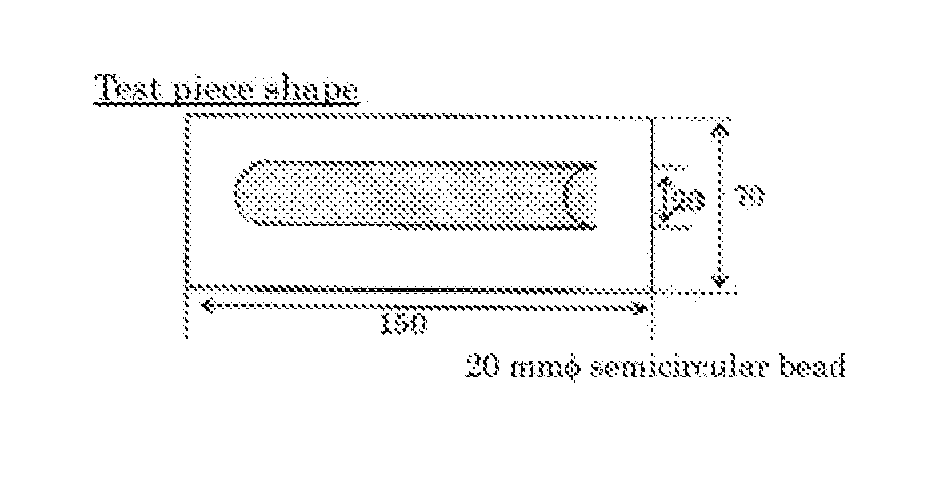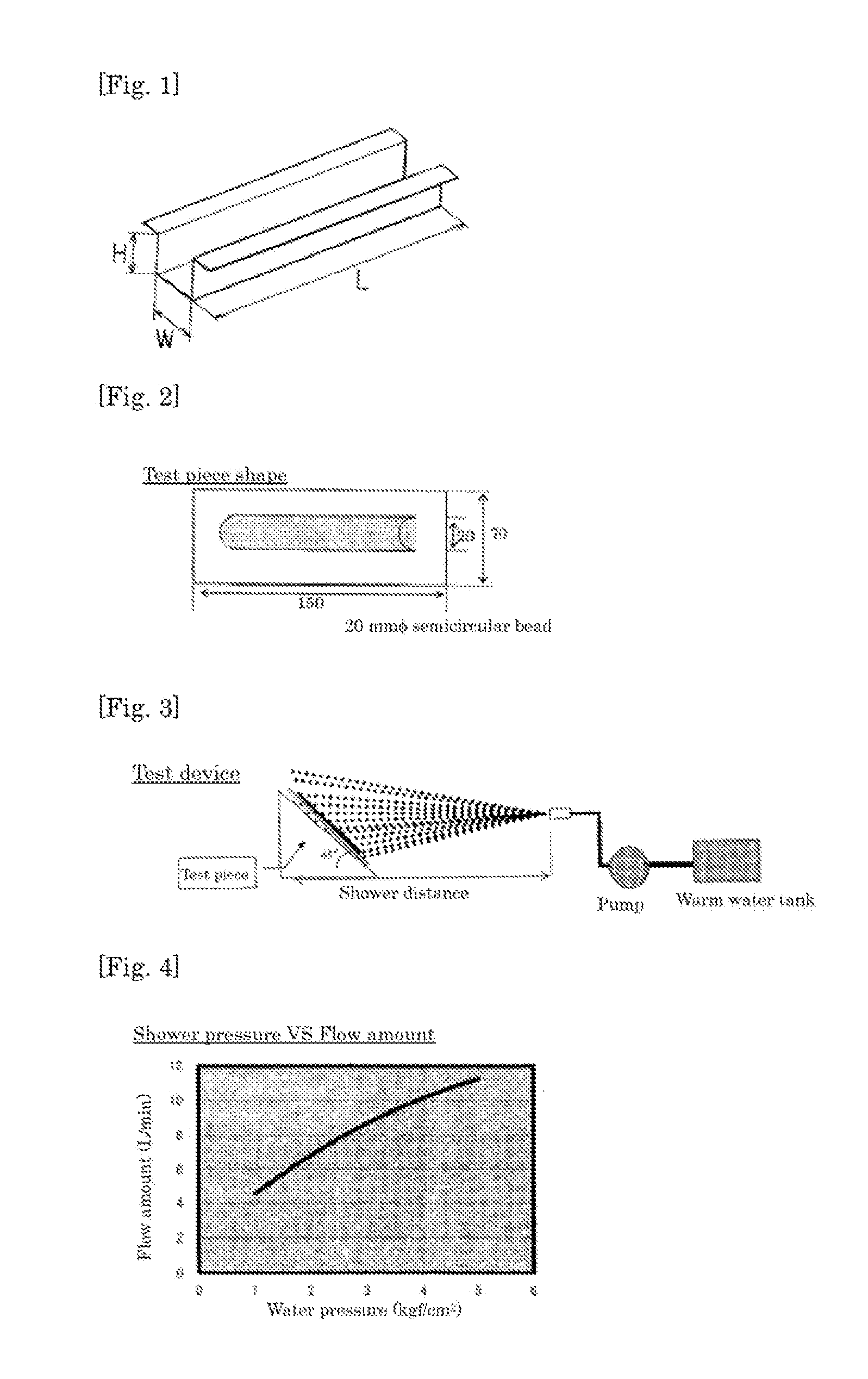Paste-like thermally expandable filler
- Summary
- Abstract
- Description
- Claims
- Application Information
AI Technical Summary
Benefits of technology
Problems solved by technology
Method used
Image
Examples
examples 1 to 15
, Comparative Examples 1 to 3
[0052]Each ingredient was compounded according to the compounding amount shown in Table 1, stirred and mixed for 30 minutes by a planetary mixer, and then defoamed under reduced pressure for 30 minutes to thereby produce paste-like thermally foaming fillers. The obtained paste-like thermally foaming fillers were evaluated for adhesiveness, volume change, viscosity shower resistance, and hat fillability according to the following methods. The results are collectively shown in Table 1. The raw materials used in Examples are shown in Table 2.
[0053](Adhesiveness)
[0054]Each test material was applied to an oil-coated steel sheet with a sheet thickness of 1.2 mm in a semicircular bead shape of about 20 mmφ with a length of 100 mm, and then baked by holding the same at 130° C. for 20 minutes. After allowed to stand for 2 hours or more until the temperature reached room temperature, each test material after thermally foamed was separated in a vertical direction, ...
PUM
| Property | Measurement | Unit |
|---|---|---|
| Temperature | aaaaa | aaaaa |
| Percent by mass | aaaaa | aaaaa |
| Percent by mass | aaaaa | aaaaa |
Abstract
Description
Claims
Application Information
 Login to View More
Login to View More - R&D
- Intellectual Property
- Life Sciences
- Materials
- Tech Scout
- Unparalleled Data Quality
- Higher Quality Content
- 60% Fewer Hallucinations
Browse by: Latest US Patents, China's latest patents, Technical Efficacy Thesaurus, Application Domain, Technology Topic, Popular Technical Reports.
© 2025 PatSnap. All rights reserved.Legal|Privacy policy|Modern Slavery Act Transparency Statement|Sitemap|About US| Contact US: help@patsnap.com


